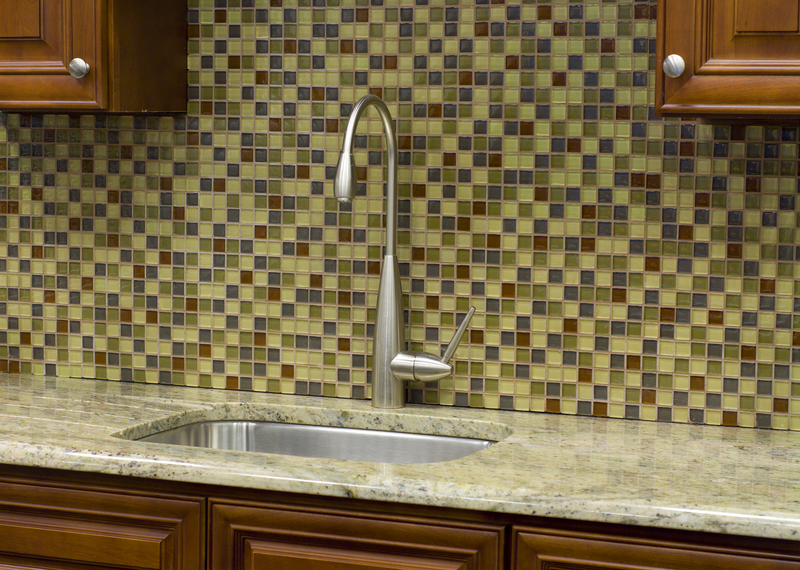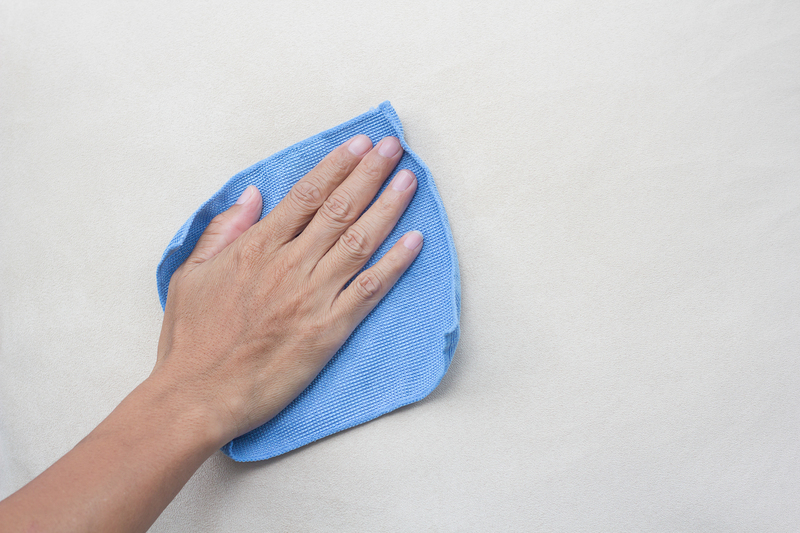Your Ultimate Resource for Mould-Free Window Sills
Posted on 26/08/2025
Your Ultimate Resource for Mould-Free Window Sills
Welcome to your go-to guide for mould-free window sills! If you're tired of battling fuzzy patches, unpleasant musty odours, or worrying about your health at home, this resource is here to help. Discover proven strategies, practical maintenance tips, and the best prevention methods for keeping your window sills clean, dry, and healthy. Whether you're a homeowner, renter, or property manager, this comprehensive article covers everything you need to know about delightfully mould-resistant window sills.

Why Do Window Sills Develop Mould?
Understanding why mould grows on window sills is the crucial first step towards prevention. Mould, or mildew, thrives in humid, warm, and poorly ventilated environments. Window sills--often exposed to condensation, temperature fluctuations, and occasional water leaks--can quickly become a breeding ground for unsightly black, green, or white mildew.
Common Causes of Mould on Window Sills
- Condensation: Inadequate insulation or double-glazing can cause moisture to collect on your window panes and drip onto the sills.
- Poor Air Circulation: Furniture, curtains, or blinds can block air flow, trapping humidity near the window's edge.
- Leaky Windows: Damaged seals or frames allow rain and outside moisture to creep in.
- Neglected Cleaning: Dust and organic materials act as food sources for mould, especially in damp corners.
- Climate Factors: Homes in wet or humid areas are naturally more susceptible to window mould.
The Health Risks of Mould on Window Sills
Prolonged exposure to mouldy window sills isn't just unsightly--it's also potentially hazardous. Mould spores can aggravate allergies, trigger asthma attacks, and cause respiratory problems, especially in children, the elderly, and those with weakened immune systems.
- Allergic reactions: Sneezing, watery eyes, and skin rashes
- Respiratory issues: Wheezing, coughing, and shortness of breath
- Worsened asthma: Mould spores are a known asthma trigger
- Long-term health problems: Chronic exposure can contribute to persistent health issues
Eliminating and preventing mould on your window sills is essential for a healthy, comfortable living environment.
How to Spot Mould on Your Window Sills
Often, mould growth on window sills begins as small, barely visible spots in the corners or along the joinery. Over time, these patches can spread, becoming larger, darker, and fuzzier. Here's how you can quickly identify trouble spots:
- Discoloration: Black, green, white, or brown spots on painted or wooden sills.
- Musty Odour: A damp, sour smell near windows, especially after rain.
- Condensation Buildup: Visible moisture on glass and window frames promotes mould growth.
- Surface Peel or Decay: Paint bubbling or wood rotting are signs of ongoing moisture issues.
Prevention: Keeping Your Window Sills Mould-Free
The best way to achieve mould-free window sills is to adopt a proactive, preventative approach. Follow these actionable tips to keep moisture--and mould--at bay!
1. Improve Air Circulation
- Open Windows Regularly: Let fresh air circulate each day, especially during and after showers or cooking.
- Install Trickle Vents: These allow continuous background ventilation, reducing humidity.
- Keep Furniture Away: Don't block window sills with large objects that trap moist air.
2. Control Humidity
- Use Dehumidifiers: Ideal for damp climates; keep indoor humidity between 30-50%.
- Extractor Fans: Essential for kitchens and bathrooms to expel excess moisture.
- Monitor with a Hygrometer: Affordable devices that display your home's humidity levels.
3. Insulate & Seal Windows
- Check Window Seals: Repair or replace cracked, brittle, or missing caulk promptly.
- Double or Triple Glazing: Modern windows drastically reduce condensation buildup.
- Weatherstripping: Prevents draughts and keeps out unwanted rainwater.
4. Clean Regularly
- Wipe Down Sills: Use a dry or lightly damp cloth weekly. Avoid letting moisture linger.
- Remove Dust: Vacuum or dust often to eliminate food sources for mould spores.
- Sanitise: Use an anti-microbial spray every few weeks, especially in humid seasons.
Best Cleaning Methods for Mould-Free Window Sills
Already noticing mould on your window sill? Act quickly to remove it and prevent regrowth. Here's a step-by-step guide to cleaning and restoring your sills safely.
Step 1: Safety First
- Wear gloves and a mask to avoid skin contact and inhaling spores.
- Open windows for ventilation during cleaning.
Step 2: Remove Surface Mould
- Use a damp cloth or sponge to gently wipe away visible mould patches.
- Dispose of cleaning cloths in sealed plastic bags afterwards.
Step 3: Apply Cleaner
- White Vinegar: A natural, non-toxic solution. Spray diluted vinegar onto the affected area, let sit for one hour, then wipe clean.
- Hydrogen Peroxide: For tougher stains, use a 3% solution. Spray, let bubble, then wipe dry.
- Anti-mould Sprays: Commercial sprays are highly effective for stubborn infestations.
Step 4: Prevent Repeat Growth
- Completely dry the area using a towel or hair dryer.
- Repair any leaks or address the underlying moisture problem.
- Consider repainting with a mould-resistant paint if recurrent mould is an issue.
Best Materials for Mould-Resistant Window Sills
Choosing the right window sill material can go a long way toward maintaining mould-free, clean window areas for years. Here's a quick comparison:
- uPVC (Unplasticised Polyvinyl Chloride):
- Highly water-resistant and easy to clean
- Immune to rot and does not absorb moisture
- Stone or Marble:
- Dense, non-porous surfaces resist mould build-up
- Require minimal maintenance
- Powder-Coated Metal:
- Mould cannot grow on metal if kept dry
- Ensure edges are sealed and rust-proofed
- Waterproof Wood or Laminate:
- Treated and sealed woods resist water infiltration
- Regular sealing needed for ongoing protection
Frequently Asked Questions About Keeping Window Sills Mould-Free
Below, find answers to the most common queries on mould-resistant window sills:
Is it safe to clean mould myself?
For small, recent patches of mould, yes. Always wear gloves and a face mask to avoid direct contact or inhalation. For widespread growth or toxic black mould (Stachybotrys chartarum), consult a professional.
How often should I clean my window sills?
Wipe your sills at least once a week, and do a thorough clean monthly. Extra care may be needed during damp or rainy seasons.
What's the best natural way to keep window sills mould-free?
Frequent wiping with white vinegar or diluted hydrogen peroxide works wonders. These eco-friendly options are safe and effective for mould prevention and removal.
Why does mould keep returning to my window sills?
Persistent moisture is the culprit. Address leaky windows, poor ventilation, and high household humidity. Occasionally consider upgrading to mould-resistant window sills made from moisture-impervious materials.
Additional Tips For Maintaining Mould-Free Window Sills
- Monitor Houseplants: Keeping plants on window sills can boost humidity and encourage mould. Drain excess water and clean up soil spills.
- Upgrade Curtains & Blinds: Choose washable, quick-drying window treatments to avoid retaining moisture near sills.
- Seasonal Checks: Inspect for leaks, cracks, and condensation, especially during weather changes.
- Prompt Repairs: Fix minor window damage before it leads to significant moisture ingress.

When to Call a Professional
If you notice:
- Large or widespread patches of mould
- A strong musty smell that persists
- Recurrent issues despite cleaning and prevention
- Physical symptoms like allergies that worsen indoors
It's time to consult a professional mould remediation service to assess the situation and recommend thorough solutions. Large or toxic mould infestations may be dangerous to tackle on your own.
Conclusion: Your Key to Mould-Free Window Sills
Achieving mould-free window sills is all about proactive care, smart maintenance, and choosing the right materials. Through regular cleaning, improved ventilation, and fast leak repairs, you can dramatically reduce the risk of mould and enjoy beautiful, lasting window sills.
Ready to start your journey towards clean, fresh, and healthy window spaces? Bookmark this article, follow the steps outlined above, and you'll have a reliable resource whenever you spot trouble brewing on your sills!
For more expert home care tips and long-lasting mould prevention solutions, explore our other comprehensive guides. With the right approach, keeping your window sills mould-free is easier than you think--restoring peace of mind AND stunning views for years to come!



